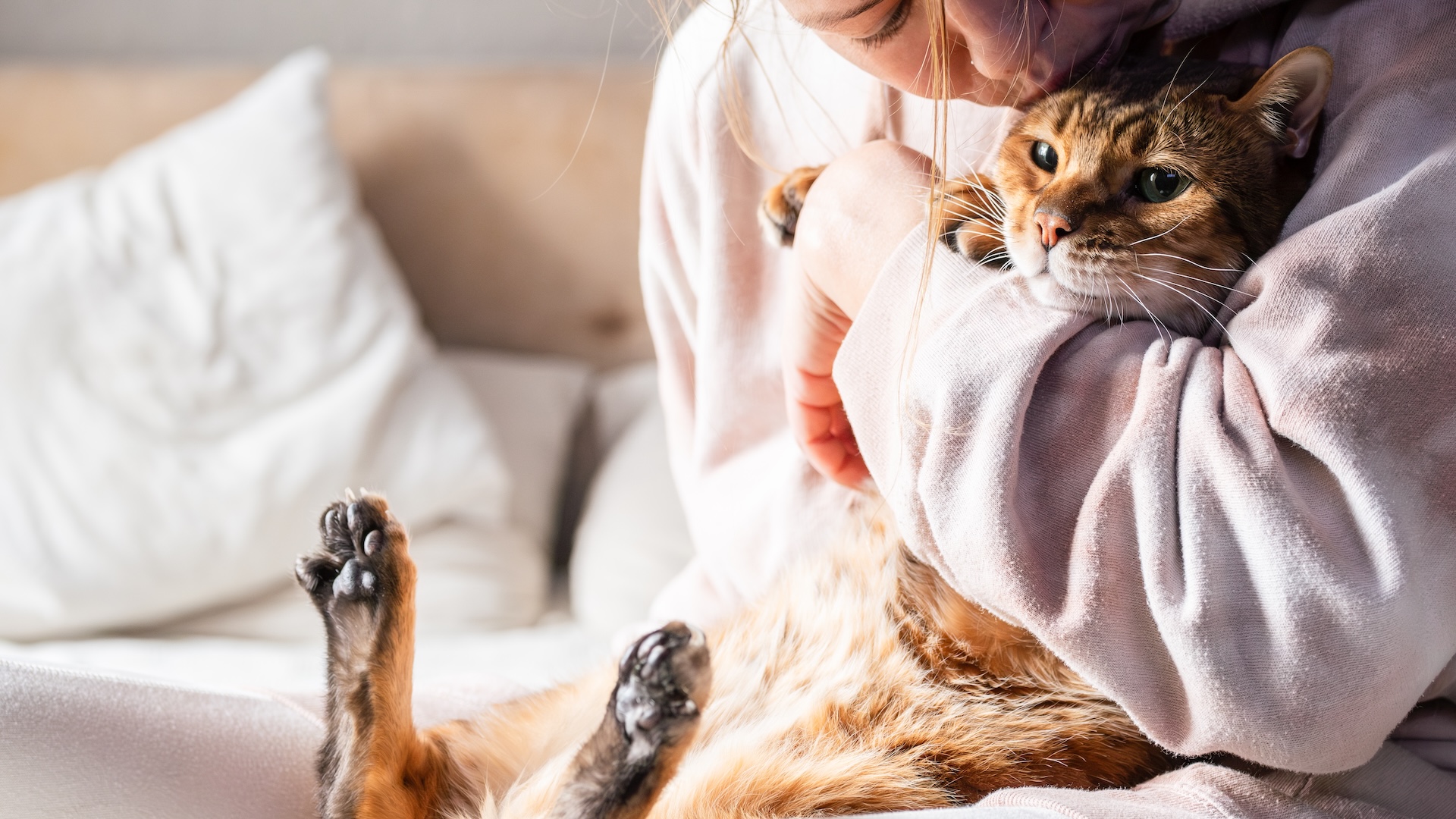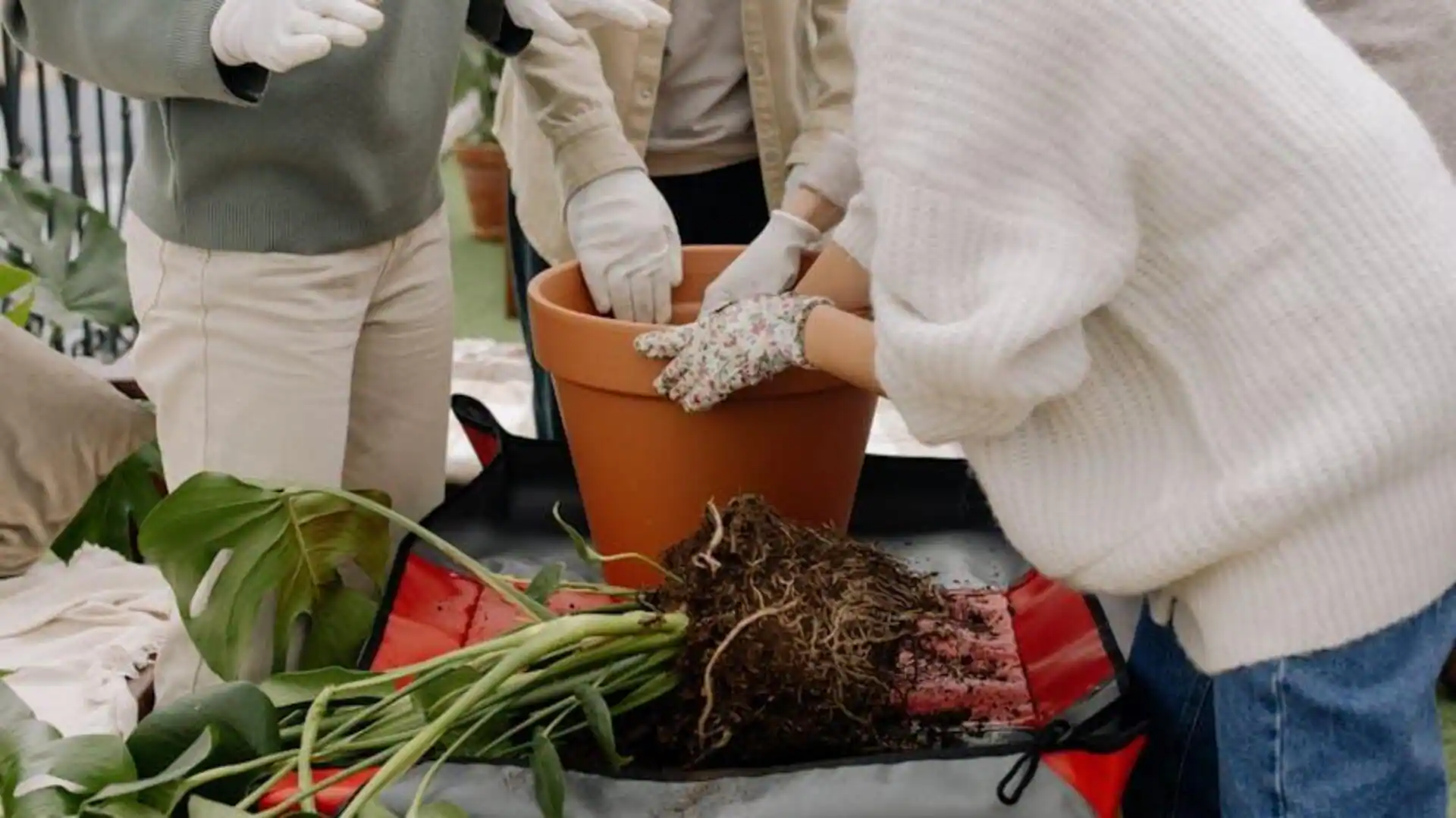By Laura Elin Pigott
Copyright livescience

Skip to main content
Close main menu
Live Science
Sign up to our newsletter
View Profile
Search Live Science
Planet Earth
Archaeology
Physics & Math
Human Behavior
Science news
Life’s Little Mysteries
Science quizzes
Newsletters
Story archive
Lab brains could become conscious
Jaguar smashes swim record
Mysterious hand positions on Maya alter
It’s too late to stop AI, readers say
Anthropologist Ella Al-Shamahi on human origins
Don’t miss these
Are cats the only animals that purr?
Domestic Cats
Why do cats hate water?
Domestic Cats
Why do cats like concrete slabs?
Domestic Cats
Why do cats and dogs eat grass?
Wild orcas offer humans food. Could they be trying to make friends — or manipulate us?
Viruses, Infections & Disease
Scientist’s cat helps discover a rare virus — yet again
Artificial Intelligence
New study claims AI ‘understands’ emotion better than us
Neuroscience
‘Minibrains’ reveal secrets of how key brain cells form in the womb
Neuroscience
When your mind goes ‘blank,’ your brain activity resembles deep sleep, scans reveal
Humans may have untapped ‘superpowers’ from genes related to hibernation, scientists claim
Memories aren’t static in the brain — they ‘drift’ over time
Artificial Intelligence
How AI companions are changing teenagers’ behavior in surprising and sinister ways
Are alpha males real?
Neuroscience
Map of 600,000 brain cells rewrites the textbook on how the brain makes decisions
Still frame from video footage recorded in the Kvænangen fjords, Norway, in 2024, showing the tongue-nibbling interaction between two free-ranging killer whales.
Owning a cat will change your brain. Here’s how.
Laura Elin Pigott
20 September 2025
When you cuddle a cat, the ‘love hormone’ oxytocin is rising in both your brains.
When you purchase through links on our site, we may earn an affiliate commission. Here’s how it works.
Is oxytocin surging through their brains?
(Image credit: Zhenny-zhenny via Shutterstock)
Cats may have a reputation for independence, but emerging research suggests we share a unique connection with them — fueled by brain chemistry.
The main chemical involved is oxytocin, often called the love hormone. It’s the same neurochemical that surges when a mother cradles her baby or when friends hug, fostering trust and affection. And now studies are showing oxytocin is important for cat-human bonding too.
Oxytocin plays a central role in social bonding, trust and stress regulation in many animals, including humans. One 2005 experiment showed that oxytocin made human volunteers significantly more willing to trust others in financial games.
You may like
Are cats the only animals that purr?
Why do cats hate water?
Why do cats like concrete slabs?
Oxytocin also has calming effects in humans and animals, as it suppresses the stress hormone cortisol and activates the parasympathetic nervous system (the rest and digest system) to help the body relax.
Scientists have long known that friendly interactions trigger oxytocin release in both dogs and their owners, creating a mutual feedback loop of bonding. Until recently, though, not much was known about its effect in cats.
Cats are more subtle in showing affection. Yet their owners often report the same warm feelings of companionship and stress relief that dog owners do — and studies are increasingly backing these reports up. Researchers in Japan, for example, reported in 2021 that brief petting sessions with their cats boosted oxytocin levels in many owners.
In that study, women interacted with their cats for a few minutes while scientists measured the owners’ hormone levels. The results suggested that friendly contact (stroking the cat, talking in a gentle tone) was linked to elevated oxytocin in the humans’ saliva, compared with a quiet resting period without their cat.
Sign up for the Live Science daily newsletter now
Get the world’s most fascinating discoveries delivered straight to your inbox.
Contact me with news and offers from other Future brandsReceive email from us on behalf of our trusted partners or sponsorsBy submitting your information you agree to the Terms & Conditions and Privacy Policy and are aged 16 or over.
Many people find petting a purring cat is soothing, and research indicates it’s not just because of the soft fur. The act of petting and even the sound of purring can trigger oxytocin release in our brains. One 2002 study found this oxytocin rush from gentle cat contact helps lower cortisol (our stress hormone), which in turn can reduce blood pressure and even pain.
Snuggling with a cat can help suppress the stress hormone cortisol. (Image credit: Vershinin89 via Shutterstock)
When is oxytocin released between cats and humans?
Research is pinpointing specific moments that cause the release of this hormone in our cross-species friendship. Gentle physical contact seems to be a prime trigger for cats.
A February 2025 study found that when owners engaged in relaxed petting, cuddling or cradling of their cats, the owners’ oxytocin tended to rise, and so did the cats’ — if the interaction was not forced on the animal.
You may like
Are cats the only animals that purr?
Why do cats hate water?
Why do cats like concrete slabs?
The researchers monitored oxytocin in cats during 15 minutes of play and cuddling at home with their owner. Securely attached cats who initiated contact such as lap-sitting or nudging showed an oxytocin surge. The more time they spent close to their humans, the greater the boost.
What about less-cuddly felines? The same study noted different patterns in cats with more anxious or aloof attachment styles. Avoidant cats (those who kept their distance) showed no significant oxytocin change, while cats who were anxious (constantly seeking their owner but easily overwhelmed by handling) had high oxytocin to begin with.
Oxytocin of avoidant and anxious cats was found to drop after a forced cuddle. When interactions respect the cat’s comfort, the oxytocin flows — but when a cat feels cornered, the bonding hormone is elusive.
Maybe humans could learn something from their feline friends on managing attachment styles. The key to bonding with a cat is understanding how they communicate.
Unlike dogs, cats don’t rely on prolonged eye contact to bond. Instead, they use more understated signals. The most well known is the slow blink. It’s a feline smile, signaling safety and trust.
Purring also plays a role in bonding with people. The low-frequency rumble of a cat’s purr has been linked not only to healing in cats themselves, but also to calming effects in humans. Listening to purring can lower heart rate and blood pressure; oxytocin mediates these benefits.
The companionship of a cat, reinforced by all those little oxytocin boosts from daily interactions, can serve as a buffer against anxiety and depression — in some cases providing comfort on par with human social support.
Are cats just less loving than dogs?
It’s true that studies generally find stronger oxytocin responses in dog–human interactions. In one widely discussed 2016 experiment, scientists measured oxytocin in pets and owners before and after ten minutes of play. Dogs showed an average 57% spike in oxytocin levels after playtime, whereas cats showed about a 12% increase.
In humans, oxytocin levels rise during meaningful social interactions. Studies show that contact with a loved one produces stronger oxytocin responses than contact with strangers. So, a happy dog greeting is akin to that rush of seeing your child or partner.
Dogs, being pack animals domesticated for constant human companionship, are almost hard-wired to seek eye contact, petting and approval from us — behavior that stimulates oxytocin release in both parties. Cats, however, evolved from more solitary hunters which didn’t need overt social gestures to survive. So, they may not display oxytocin-fueled behaviour as readily or consistently. Instead, cats may reserve their oxytocin-releasing behaviour for when they truly feel safe.
RELATED STORIES
—Cats recognize familiar BO and can spot strangers from the stink of their armpits and toes
—Cats may have been domesticated much later than we thought — with earlier felines being eaten or made into clothes
—Cats are better at word association than human babies are, study finds
A cat’s trust isn’t automatic; it must be earned. But once given, it is reinforced by the same chemical that bonds human parents, partners and friends.
So, next time your cat blinks slowly from across the sofa or climbs on to your lap for a purr-filled cuddle, know that something invisible is happening too: oxytocin is rising in both your brains, deepening the trust and soothing the stress of daily life. Cats, in their own way, have tapped into the ancient biology of love.
This edited article is republished from The Conversation under a Creative Commons license. Read the original article.
Laura Elin Pigott
Senior Lecturer in Neurosciences and Neurorehabilitation, Course Leader in the College of Health and Life Sciences, London South Bank University
Laura Elin Pigott is a neuroscientist and senior lecturer at London South Bank University, where she leads neuroscience and neurophysiology courses and educational initiatives. Her research spans neuroimaging, glioma progression, and machine learning in cancer diagnostics, with recent work exploring cognitive neuroscience and brain development. She is also active in advancing gender equality in STEM, serving with UN Women UK and contributing to initiatives such as Frontiers Women in Neurology/Radiology.
You must confirm your public display name before commenting
Please logout and then login again, you will then be prompted to enter your display name.
Are cats the only animals that purr?
Why do cats hate water?
Why do cats like concrete slabs?
Why do cats and dogs eat grass?
Wild orcas offer humans food. Could they be trying to make friends — or manipulate us?
Scientist’s cat helps discover a rare virus — yet again
Latest in Mind
If tiny lab-grown ‘brains’ became conscious, would it still be OK to experiment on them?
Tiny ‘brains’ grown in the lab could become conscious and feel pain — and we’re not ready
Map of 600,000 brain cells rewrites the textbook on how the brain makes decisions
‘Minibrains’ reveal secrets of how key brain cells form in the womb
New brain implant can decode a person’s ‘inner monologue’
Can you dream during non-REM sleep?
Latest in News
Who is eligible for this year’s COVID vaccine? Everything you need to know
‘Shocking’: Black hole found growing at 2.4 times the theoretical limit
Science news this week: The world’s oldest mummy, and an ant that mates with clones of a distant species
Vast source of rare Earth metal niobium was dragged to the surface when a supercontinent tore apart
Cold snap in Florida made Burmese python puke up a whole deer
Skywatching alert! See 2 bright comets on the same night as a meteor shower this October
LATEST ARTICLES
‘Shocking’: Black hole found growing at 2.4 times the theoretical limit
Paralvinella hessleri: The yellow worm that lives in acid and fights poison with poison
WANDRD PRVKE Lite camera backpack review
Why does Pluto have such a weird orbit?
Science news this week: The world’s oldest mummy, and an ant that mates with clones of a distant species
Live Science is part of Future US Inc, an international media group and leading digital publisher. Visit our corporate site.
Contact Future’s experts
Terms and conditions
Privacy policy
Cookies policy
Accessibility Statement
Advertise with us
Web notifications
Editorial standards
How to pitch a story to us
Future US, Inc. Full 7th Floor, 130 West 42nd Street,
Please login or signup to comment
Please wait…



